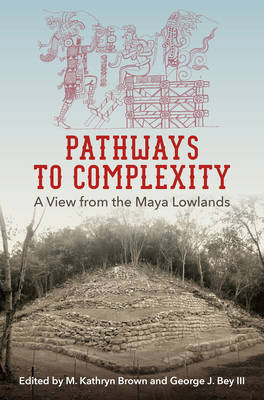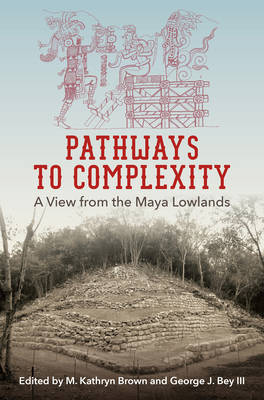
- Afhalen na 1 uur in een winkel met voorraad
- Gratis thuislevering in België
- Ruim aanbod met 7 miljoen producten
- Afhalen na 1 uur in een winkel met voorraad
- Gratis thuislevering in België
- Ruim aanbod met 7 miljoen producten
Omschrijving
Pathways to Complexity synthesizes a wealth of new archaeological data to illuminate the origins of Maya civilization and the rise of Classic Maya culture. In this volume, prominent Maya scholars argue that the development of social, religious, and economic complexity began during the Middle Preclassic period (1000-300 BC), hundreds of years earlier than previously thought.
p>Contributors reveal that villages were present in parts of the lowlands by 1000 BC. Combining recent discoveries from the northern lowlands--an area often neglected in other volumes--and the southern lowlands, the collection then traces the emergence of sociopolitical inequality and complexity in all parts of the Yucatán Peninsula over the course of the Middle Preclassic period. They show that communities evolved in different ways due to influences such as geographical location, ceramic exchange, shell ornament production, agricultural strategy, religious ritual, ideology, and social rankings. These varied pathways to complexity developed over half a millennium and culminated in the institution of kingship by the Late Preclassic period.Presenting exciting work on a dynamic and poorly understood time period, Pathways to Complexity demonstrates the importance of a broad, comparative approach to understanding Preclassic Maya civilization and will serve as a foundation for future research and interpretation.
A volume in the series Maya Studies, edited by Diane Z. Chase and Arlen F. Chase Contributors: M. Kathryn Brown George Bey III Tara Bond-Freeman Fernando Robles Castellanos Tomas Gallareta Negron E. Wyllys Andrews V Anthony Andrews David S. Anderson Lauren Sullivan Jaime J. Awe James F. Garber Mary Jane Acuña William Saturno Bobbi Hohmann Terry Powis Paul Healy Richard Hansen Donald W. Forsyth David Freidel Barbara Arroyo Richard E. W. AdamsSpecificaties
Betrokkenen
- Uitgeverij:
Inhoud
- Aantal bladzijden:
- 526
- Taal:
- Engels
- Reeks:
Eigenschappen
- Productcode (EAN):
- 9780813054841
- Verschijningsdatum:
- 27/03/2018
- Uitvoering:
- Hardcover
- Formaat:
- Genaaid
- Afmetingen:
- 156 mm x 234 mm
- Gewicht:
- 984 g

Alleen bij Standaard Boekhandel
Beoordelingen
We publiceren alleen reviews die voldoen aan de voorwaarden voor reviews. Bekijk onze voorwaarden voor reviews.











